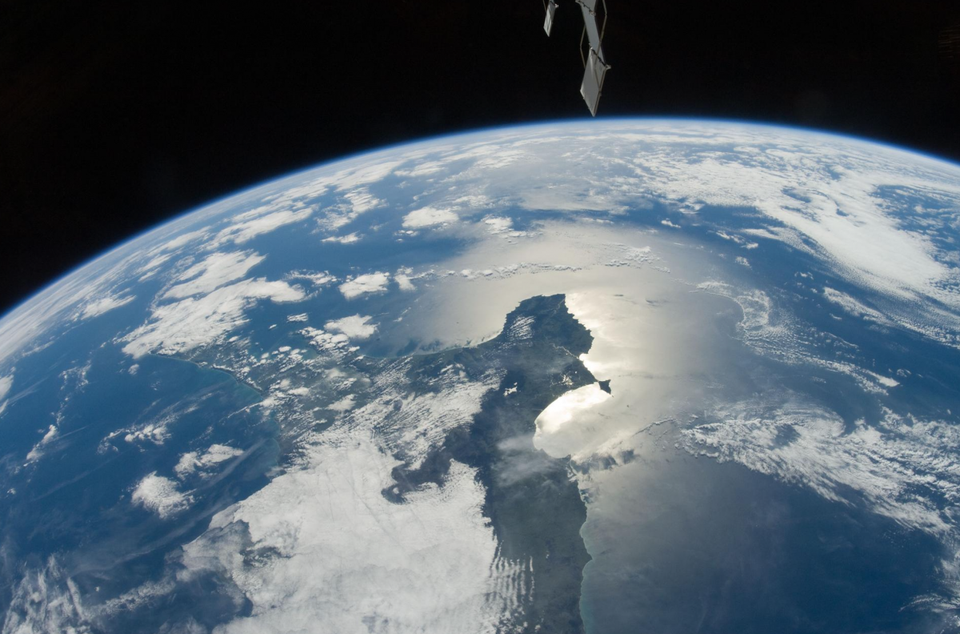Here is a satellite shot from NASA showing a panoramic view centered on the Azuero Peninsula of Panama. The southwestern Caribbean Sea and the cloud-covered Isthmus of Panama are to the left and the Gulf of Panama and the eastern Pacific Ocean with sun glint are on the right.
Robin Andrews writes in Forbes about how the Isthmus of Panama, separating the Caribbean Sea from the Pacific Ocean, has historically been of enormous value to a wide range of communities. Arguably most famous for the feat of engineering that is the Panama Canal, it was once targeted for a huge expansion which almost involved the use of nuclear weapons.
Now, a brand-new paper in Scientific Reports is set to transform how we understand the origins of this hugely significant landmass. It suggests that the current model – in which a volcanic landscape is gradually pushed up over the course of a lengthy tectonic battle – may not be the full picture. Instead, the Cardiff University-led team has quite literally dug up evidence that suggests active volcanism, the sort that causes islands to rise up from the waves all over the world, helped build this colossal bridge too.
As noted by NASA’s Earth Observatory, around 20 million years ago the Isthmus didn’t exist, and the sea flowed freely instead between North and South America. As is still happening today, the Pacific tectonic plate was slowly slipping beneath the Caribbean plate. Like that observed at other subduction zones all over the planet, this created some strange crust-mantle interactions that produced volcanism at the surface. In this case, that meant volcanoes appeared underwater.
Over time, these volcanoes grew ever higher as they continued to erupt and beef up their flanks. At the same time, the fight between these two tectonic plates physically pushed up the crust, causing the seafloor to rise. When the peaks of these volcanoes poked above the sea surface, sediment flowing through the region managed to stick and build up along newly formed shores. By 2.8 million years ago, the gap between the two continents had been entirely filled in, and the Isthmus we know and love today had been constructed.
That, at least, is the classic story.
David Buchs, a lecturer in geology at Cardiff University and lead author of the new study, wondered if this grand geological story was incomplete. His previous work on volcanic islands, like those in the Hawai’ian archipelago, demonstrated clearly that plenty of landforms can become new terrestrial landmarks all by themselves without any tectonic uplift involved whatsoever. The Isthmus is quite clearly a volcanic landscape, so it seemed logical that role active volcanism played a role at the surface.
